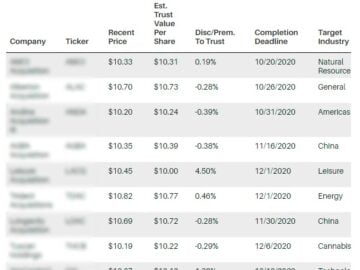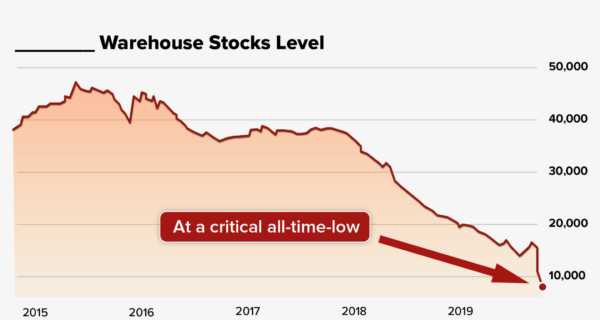Seeking out great stocks to buy is essential, but many would say it’s just as important to know which stocks to steer clear of. A losing stock can eat away at your precious long-term returns. So, figuring out which stocks to trim or get rid of is an important part of proper portfolio maintenance.
Even the best gardens need pruning, and our team has spotted a few stocks that seem like prime candidates for selling or avoiding. Continue reading to find out which three stocks our team is staying away from this week.
TripAdvisor’s (TRIP) stock price has been making the voyage downward since mid-March and doesn’t seem likely to make the return trip anytime soon. Especially not after major hotel chains joined forces last month to force TripAdvisor to reverse course on its subscription to a cash-back instead of hotel discounts, seemingly taking the wind out of the company’s Tripadvisor Plus program.
“This shift is a big departure for Tripadvisor, having previously pushed Tripadvisor Plus as offering ‘no brainers’ to customers and enticing them with best in class rates,” said Bernstein analyst Richard Clarke. “The new model makes sense and could offer good deals to customers, but will be in a competitive space with Booking.com, Hopper, and Revolut also offering cashback/credit on bookings with also charging a $99 fee. This might ultimately be a test if Tripadvisor Plus can be a full-service travel subscription offer, not just a discount club.”
Mizuho analyst James Lee lowered the firm’s price target on TripAdvisor to $42 from $50, citing the disruption in travel trends in Q3 by new delta cases, which caused student travel restrictions and consumer hesitancy heading into the October holiday. The analyst believes the travel recovery story has been pushed back to fiscal 2022 instead of the second half of 2021.
Recent heavy put volume for TRIP is another cause for concern and could indicate that investors are becoming more bearish on the stock ahead of the November 4th earnings call. The most active are those that expire on October 29th with a strike price of $30. The Put/Call Ratio is 4.10. The consensus analyst recommendation is to Hold TRIP stock. We’ll be keeping an eye on the stock as the next earnings release nears, but we’ll stay away until headwinds clear.
Increasing input costs for materials and labor are beginning to impact the solar power industry. Supply chain issues and high demand are driving up prices, particularly for steel and aluminum, which could hurt SolarEdge’s (SEDG) 2022 revenue.
Investors will be scrutinizing the company’s guidance during the November 4th earnings call for clues on what to expect next year. Over the past 30 days, 1 analyst has lowered their EPS estimate for the current quarter, and 3 analysts have lowered their estimate for 2021 — not a good sign for the stock, which is trading at a premium ahead of earnings. SEDG has a trailing 12-month P/E ratio of 68.15, double the industry average of 33.2.
Guggenheim analyst Joseph Osha cut his SEDG rating to Neutral from Buy, seeing “risks to consensus expectations rising, notably in utility and large-scale commercial solar,” that are not fully reflected in consensus estimates.
Intel (INTC) made it to our list of stocks to avoid after a so-so earnings call. The company beat analyst EPS estimates of $1.11, reporting adjusted earnings of $1.71 per share. But the company missed sales expectations and attributed a decline in its PC business to broader components shortages, which are likely to continue into 2022. For the third quarter, Intel reported adjusted revenue of $18.1 billion, where analysts were looking for revenue of $18.2 billion.
INTC was downgraded at Morgan Stanley, Mizuho, and UBS, and numerous firms lowered its price target.
Deutsche Bank analyst Ross Seymore lowered the PT to $55 from $58 and reiterated a Hold rating on the shares.
While Intel’s earnings report and guidance were ” mildly disappointing,” the more important news was the delay of the company’s analyst day to February 2022 and the early unveiling of its 2022 and mid-term financial targets, Seymore notes. The financial metrics yield earnings and cash flow “significantly below” Street expectations.
Morgan Stanley analyst Joseph Moore has consistently said that over $25B in capital spending “would be problematic.” He contends that guidance for $25B-28B “and higher in future years” puts the burden on double-digit growth in 2023 and beyond, which he views as challenging given his more cautious view on hardware demand overall.









